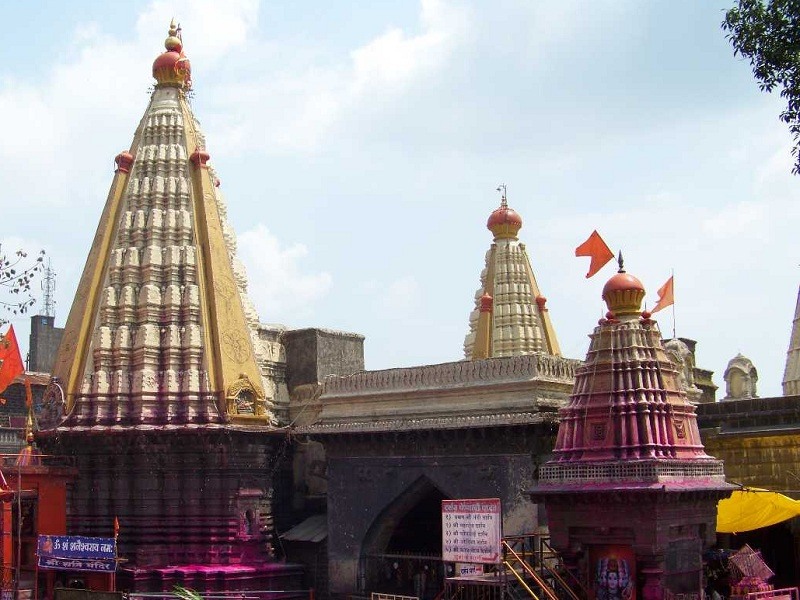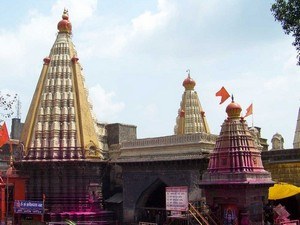Jyotiba Temple, Kolhapur - Timings, Festivals, History, Darshan, Pooja Timings
Photo Credit: Flickr
 India | Maharashtra | Kolhapur
India | Maharashtra | Kolhapur
 #22 of 29 Places to Visit in Kolhapur
#22 of 29 Places to Visit in Kolhapur
 Distance (From Kolhapur): 20 Kms
Distance (From Kolhapur): 20 Kms
 Trip Duration (Including Travel): 2 Hours
Trip Duration (Including Travel): 2 Hours
 Place Location: At Wadi Ratnagiri
Place Location: At Wadi Ratnagiri
 Transportation Options: Bus / Cab
Transportation Options: Bus / Cab
 Travel Tips: None
Travel Tips: None
About Jyotiba Temple
At a distance of 20 Km from Kolhapur, Jyotiba Temple is a sacred Hindu temple situated near Wadi Ratnagiri in the Kolhapur district of Maharashtra. Situated at an altitude of about 3124 feet, the glorious temple of Jyotiba is dedicated to Lord Jyotiba, who was believed to be an embodiment of three different deities Brahma, Vishnu, and Maheshwar.It is one of the revered places of pilgrimage in Maharashtra, and among the must visit places as part of the Kolhapur pilgrimage packages.
History of Jyotiba Temple
The Jyotiba Temple near Kolhapur was constructed in three distinct phases. Historical records indicate that the original Kedareshwar Temple was established by Navaji Sayaji, commonly referred to as Kedar baba, from the village of Kival near Karad. In 1730, Ranoji Shinde replaced it with the current Jyotiba temple, which measures 55 feet in length, 37 feet in width, and 77 feet in height. The second Kedareshwar temple was built by Daulatrao Shinde in 1808, while the third temple, dedicated to Ramling, was erected around 1780 by Malji Nilam Panhalkar.
Mythology of Jyotiba Temple
Sri Jyotiba, also referred to as Kedareshwar, is regarded as an embodiment of the three principal deities: Brahma, Vishnu, and Shiva. According to legend, these deities united to manifest as Jyotiba, who ultimately vanquished the evil Ratnasura. Lord Jyotiba also defeated the demon Raktabhoja, thereby liberating the area from their oppressive rule. He assisted Ambabai in her battle against the demons and established his kingdom on this mountain, aligning himself with the Nath sampradaya. It is traditionally believed that visitors should first pay homage at the Mahalakshmi Temple in Kolhapur before coming to this temple.
Architecture of Jyotiba Temple
The Hemadpanthi style temple comprises a trio of temples, renowned for their impressive soaring spires and detailed carvings that captivate visitors. The temple was constructed with exquisite black basalt stone by Kedar craftsmen, the descendants of the Acharyas who built the Kedarnath Temple under the direction of Adi Shankaracharya in the 8th century AD. These craftsmen are also credited with the construction of the Martand Bhaira (Khandoba), the Tulja Bhavani temple in Tuljapur, and the Kedareshwar Temple at Harishchandragad.
This remarkable temple is estimated to measure around 55 feet in length, 37 feet in width, and 77 feet in height. Its interior is both elegant and unadorned, while the exterior features a staircase of 100 steps that pilgrims must ascend to access the main temple. The sanctum sanctorum contains the self-manifested idol of Shree Jyotiba, which stands approximately four and a half feet tall and is depicted as Batu Bhairav with four arms. The idol holds a trident, a damaru, and a snake in its hands, while a Shesh Naag rests upon its head. Adorned with various ornaments around its neck, arms, and feet, the idol is complemented by several smaller temples and light towers within the temple complex.
Festivals of Jyotiba Temple
The Jyotiba temple hosts an annual fair during the sacred months of Chaitra and Vaishakha. The Chaitra Yatra, celebrated on Chaitra Poornima in March or April, features grand processions where devotees sing hymns and toss pink powder (Gulal), creating a lively and colorful atmosphere. The temple becomes enveloped in this vibrant pink hue, visible from great distances. Acknowledging the significance of the festival, the Maharashtra government deploys Special Forces to manage and oversee the large influx of devotees and the various activities associated with the event, as hundreds of thousands travel to Kolhapur for the fair. The Vaishakh Yatra, occurring in April or May, is highlighted by the palkhi (palanquin) procession of Lord Jyotiba, conducted with immense devotion and enthusiasm. Additionally, Maha Shivratri and Navratri are celebrated here with considerable fervor.
Dress Code & Other Restrictions of Jyotiba Temple
While the Jyotiba Temple doesn't have a strict dress code, it is recommended to adhere to modest clothing that covers your upper arms and legs as a sign of respect. Men are encouraged to wear a dhoti or pajama paired with an upper garment, as well as formal trousers and shirts. Women may opt for a saree, half saree, or chudidhars. It is advisable to refrain from wearing contemporary attire such as mini-skirts, shorts, and sleeveless tops while on the temple grounds.
Non-Hindus are welcome to explore the temple complex and appreciate its architectural beauty; however, access to the sanctum sanctorum may be restricted.
Jyotiba Temple Timings
Monday: 5:30 AM - 10 PM
Tuesday: 5:30 AM - 10 PM
Wednesday: 5:30 AM - 10 PM
Thursday: 5:30 AM - 10 PM
Friday: 5:30 AM - 10 PM
Saturday: 5:30 AM - 10 PM
Sunday: 5:30 AM - 10 PM
Jyotiba Temple Entry Fee
Entry is Free
Best Time to Visit Jyotiba Temple
The best time to visit the Jyotiba Temple is during the winter months from November to February when the weather is pleasant. Additionally, the annual fair held during the festival of Chaitra Purnima in March/April attracts many pilgrims and tourists. Alternatively, one may consider visiting the temple during the monsoon season, which lasts from June to September and brings moderate rainfall. It is advisable to steer clear of the summer months from April to May, as temperatures can be extremely high.
How to Reach Jyotiba Temple
Located approximately 30 kilometers away, Chhatrapati Rajaram Maharaj Airport, Kolhapur serves as the nearest airport to Jyotiba Temple, and has direct flights from major cities such as Hyderabad, Bengaluru, and Mumbai. About 20 Km away, Kolhapur Railway Station is the nearest rail head that has direct train services from various cities, including Mumbai, Pune, Delhi, Tirupati, Hyderabad, Ahmedabad, Nagpur, Bangalore, Gorakhpur, Satara, Sangli, Solapur, Dhanbad, Bidar, and Mangalore. Additionally, Kolhapur is conveniently located on NH-4, ensuring robust bus connectivity to Mumbai, Bangalore, Pune, Belgaum, Solapur, Sangli, Panjim, Satara, Mahabaleshwar, Nashik, Hyderabad, and Hubli. Visitors can access Jyotiba Temple by utilizing city buses or by hiring a cab or auto-rickshaw from Kolhapur.

















